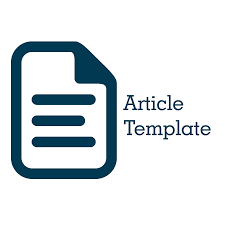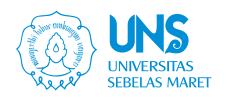Implementasi program pendidikan lingkungan hidup dalam proyek penguatan profil pelajar Pancasila di sekolah dasar
Abstract
This study aims to (1) Describe the implementation of environmental education programs in the Pancasila student profile strengthening project at elementary school, and (2) Describe supporting factors and inhibiting factors for the implementation of environmental education programs in the Pancasila student profile strengthening project at elementary school. This type of research is a qualitative case study. Data collection techniques use interviews, observations, and questionnaires. The data analysis technique uses Cresswell data analysis. The results of the study found that the environmental education program in the Pancasila student profile strengthening project at elementary school was successfully implemented with reference to the assessment indicators, namely using an environmental-based curriculum, having an environmentally-based school culture, and having facilities and infrastructure that support the program. The implementation of the environmental education program in the Pancasila student profile strengthening project has supporting factors, namely: (1) The school has partners who support the program, (2) The school is an Adiwiyata school, (3) The school has adequate environmental facilities and infrastructure, (4) The school has competent teaching staff, and (5) The school has environmental conditions that support the creation of optimal environmental learning, while the inhibiting factors include: (1) Limited aspiration funds for improving facilities and infrastructure, and (2) Several school residents who are not yet consistent in responding to the environment properly.
Keywords
References
[1] G. Sherliana, “Dampak Kerusakan Lingkungan Hidup Yang Ditimbulkan Dari Pencemaran Lingkungan Hidup Di Indonesia.” 2020.
[2] S. D. Meyrena and R. Amelia, “Analisis Pendayagunaan Limbah Plastik Menjadi Ecopaving Sebagai Upaya Pengurangan Sampah,” Indones. J. Conserv., vol. 9, no. 2, pp. 96–100, 2020, doi: 10.15294/ijc.v9i2.27549.
[3] A. Hariandi, D. B. D. P. Dwitama, N. A. Rahman, R. Ramadhani, and Y. Yunsacintra, “Implementasi Pendidikan Karakter Peduli Lingkungan di Sekolah Dasar,” JIIP - J. Ilm. Ilmu Pendidik., vol. 6, no. 12, pp. 10155–10161, 2023, doi: 10.54371/jiip.v6i12.3328.
[4] A. J. Ilham, A. T. Kusuma, F. R. Putri, and B. Selsia, “Peran Pendidikan Lingkungan dalam Meningkatkan Kesadaran dan Tindakan Berkelanjutan di Sekolah Dasar,” Masaliq, vol. 3, no. 5, pp. 907–917, 2023, doi: 10.58578/masaliq.v3i5.1500.
[5] J. Siskayanti and I. Chastanti, “Analisis Karakter Peduli Lingkungan pada Siswa Sekolah Dasar,” J. Basicedu, vol. 6, no. 2, pp. 1508–1516, 2022, doi: 10.31004/basicedu.v6i2.2151.
[6] N. Rachmawati, A. Marini, M. Nafiah, and I. Nurasiah, “Projek Penguatan Profil Pelajar Pancasila dalam Impelementasi Kurikulum Prototipe di Sekolah Penggerak Jenjang Sekolah Dasar,” J. Basicedu, vol. 6, no. 3, pp. 3613–3625, 2022, doi: 10.31004/basicedu.v6i3.2714.
[7] A. Al Karim, G. A. Wibowo, I. M. S. Utomo, and A. A. Aswagata, “Peningkatan gaya hidup berkelanjutan melalui peduli lingkungan di sekolah menengah atas,” J. Pembelajaran Pemberdaya. Masy., vol. 4, no. 1, pp. 291–299, 2023, doi: 10.33474/jp2m.v4i1.20199.
[8] Arianti, “Urgensi Lingkungan Belajar Yang Kondusif Dalam Mendorong Siswa Belajar Aktif,” Educ. J. Sos. Hum. dan Pendidik., vol. 2, no. 1, pp. 41–51, 2022, doi: 10.51903/education.v2i1.148.
[9] R. Koniah, Hendratno, and W. Sukartiningsih, “Keefektifan Media Poster Sebagai Sarana Penyampaian Informasi: Studi Literatur Tinjauan Multi Perspektif,” J. Sekol., vol. 9, no. 2, pp. 281–291, 2025.
[10] F. Riyanawati, Y. D. Fitri, Z. Natasya, and S. Iskandar, “Identifikasi model pembelajaran yang sesuai dengan karakteristik siswa berdasarkan gaya belajar,” Didakt. Dwija Indria, vol. 13, no. 3, pp. 246–254, 2025.
[11] V. Safithri, N. A. Fajar, and A. Rahmiwati, “Penyuluhan Perilaku Hidup Bersih dan Sehat pada Siswa Sekolah Dasar : Systematical Review Counseling on Clean and Healthy Living Behaviors to Primary School Students : Systematical Review,” JIK (Jurnal Ilmu Kesehatan), vol. 8, no. 2, pp. 249–259, 2024, doi: http://dx.doi.org/10.33757/jik.v8i2.974.
[12] M. Haryani, M. A. Hatibie, B. Setiawan, H. Malik, and R. Antu, “Implementasi Mata Kuliah PHS : Penanaman Tanaman Obat Keluarga di SMP Negeri 2 Gorontalo,” vol. 2, no. 1, pp. 23–28, 2025, doi: 10.37905/jrpi.v2i1.29356.
[13] A. Machroji and Suharyani, “Implementasi Efisiensi Energi pada Bangunan Sekolah SMPI Al Azhar 55 Jati Makmur Bekasi,” Siar IV 2023 Semin. Ilm. Arsit., pp. 934–939, 2023.
[14] R. Putri and Z. H. Ramadan, “Strategi guru dalam menerapkan P5 tema gaya hidup berkelanjutan kelas 1 di sekolah dasar,” Featur. Res. 118 SCHOULID Indones. J. Sch. Couns., vol. 9, no. 1, pp. 118–126, 2024, doi: 10.23916/084454011.
[15] Suciati et al., “Pelatihan Pembuatan Jamu pada Siswa SMA di Kabupaten Banyuwangi sebagai Upaya Pelestarian Budaya dan Menanamkan Enterprenuership,” J. Pengabdi. Masy., vol. 4, no. 1, pp. 191–202, 2023, doi: 10.32815/jpm.v4i1.1333.
[16] T. Wulandari and S. Wibawa, “Efektivitas penggunaan model pembelajaran pjbl berbasis deep learning & ict terhadap peningkatan keterampilan berfikir kreatif siswa sdn 3 glodogan,” Didakt. Dwija Indria, vol. 13, no. 3, pp. 343–351, 2025.
[17] W. K. S. Achmad, N. A. Idrus, M. Irfan, and U. Utami, “Pemanfaatan Lingkungan Alam sebagai Media dan Sumber Belajar pada Komunitas Guru Pecinta Alam (GURILA),” Int. J. Community Serv. Learn., vol. 8, no. 1, pp. 70–78, 2024, doi: 10.23887/ijcsl.v8i1.75907.
[18] F. Agustina, F. Destini, A. D. Putra, and Rapani, “Pengaruh Model Project Based Learning (PjBl) Terhadap Kemampuan Berpikir Kreatif Pada Pembelajaran IPAS Siswa Kelas V SD,” Didakt. Dwija Indria, vol. 13, no. 3, pp. 440–446, 2025, doi: 10.70277/jgsd.v1i4.6.
[19] N. F. Azima, “Pendidikan Lingkungan Hidup untuk Siswa Sekolah Dasar,” J. Ilm. Pendidik. Lingkung. dan Pembang., vol. 22, no. 02, pp. 1–11, 2022, doi: 10.21009/plpb.222.01.
Refbacks
- There are currently no refbacks.



